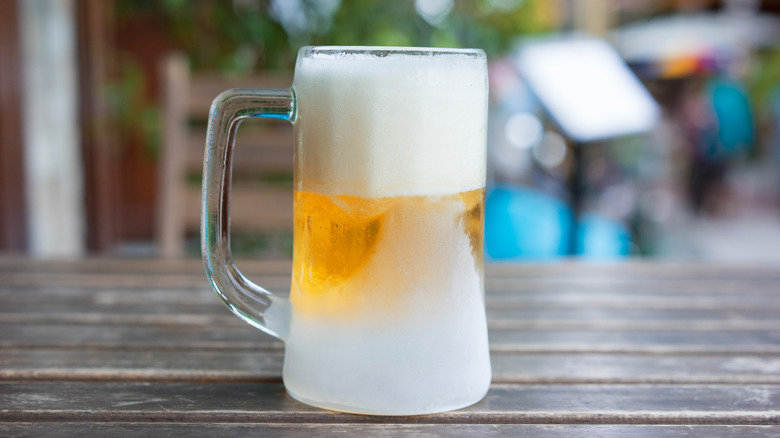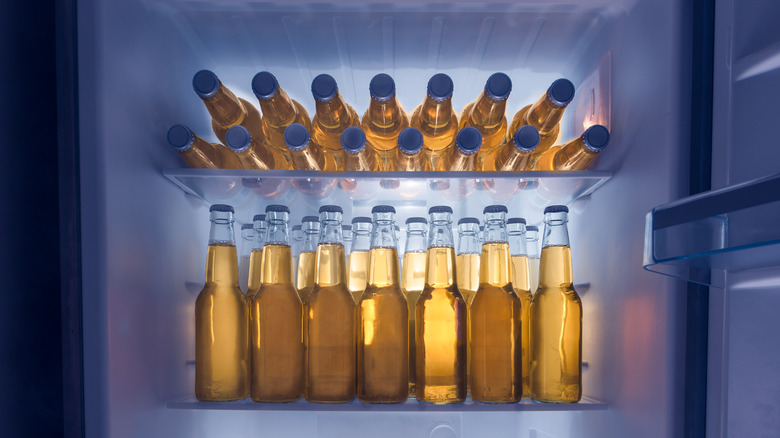For The Best Quality Brew, Never Serve Beer In A Frosted Glass
A frosty glass full of cold beer and a bit of frothy foam is the pinnacle of perfection for a beer drinker. However, if you are a fan of those frozen mugs, it might surprise you to learn they may be impeding your drinking experience.
Some people believe serving beer in a frosty mug will make the beer colder, but this is more myth than truth. A frosty mug really doesn't make your brewski colder if you've stored it in the fridge; it's more about presentation and making it more appealing to drink. In fact, when you serve beer that has been stored at cooler temperatures than it should be, you will not be able to taste and differentiate all the subtle flavors that can range from sweet to bitter to mild and malty.
Even if you are just learning about how to pick and taste beer, it is fair to say no one wants to drink warm or hot beer. That's why you keep it in the refrigerator to chill before you serve it. And while you definitely want to serve it cold, you should never put beer in the freezer, nor should you add ice to this carbonated beverage for fear that it would water down the taste.
Best temperature for beer
Storage factors aside, there are a few other reasons beer lovers should avoid those cool looking frosted mugs. When placed in the freezer, ice crystals tend to form on the sides of the glass wall and mess with the carbonation of your beer, and regardless of whether it comes from keg, can, or bottle, it will cause your beer to go flat much quicker. Not to mention, regardless of how clean you are, the freezer is a hotbed for smells that can be absorbed by your glass as it turns frosty.
So, if you are shunning the frosty mug so you can experience all the nuance and complexity of a beer's flavor, how cold should beer be when you serve it? Your refrigerator should ideally be running at 40 degrees Fahrenheit or below. This is around the optimal temperature for a Pilsner, but an IPA or dark lager can be a little warmer and served at anywhere from 45 to 50 degrees Fahrenheit. Moreover, if you are a fan of Belgian dubbels or cask ales, they can be served between 50 and 55 degrees Fahrenheit.

